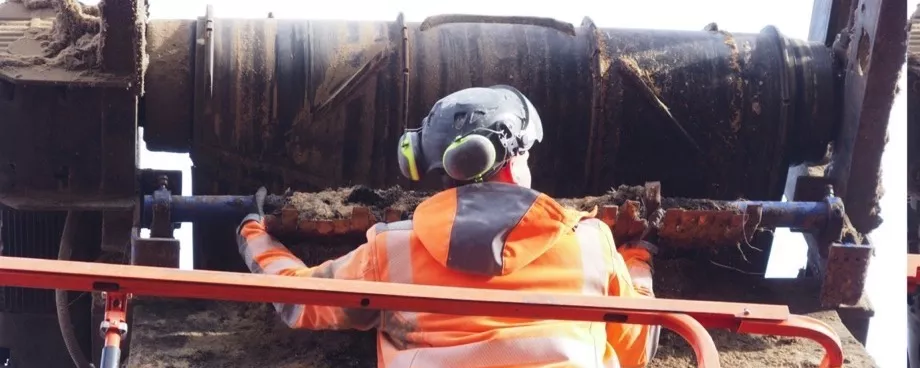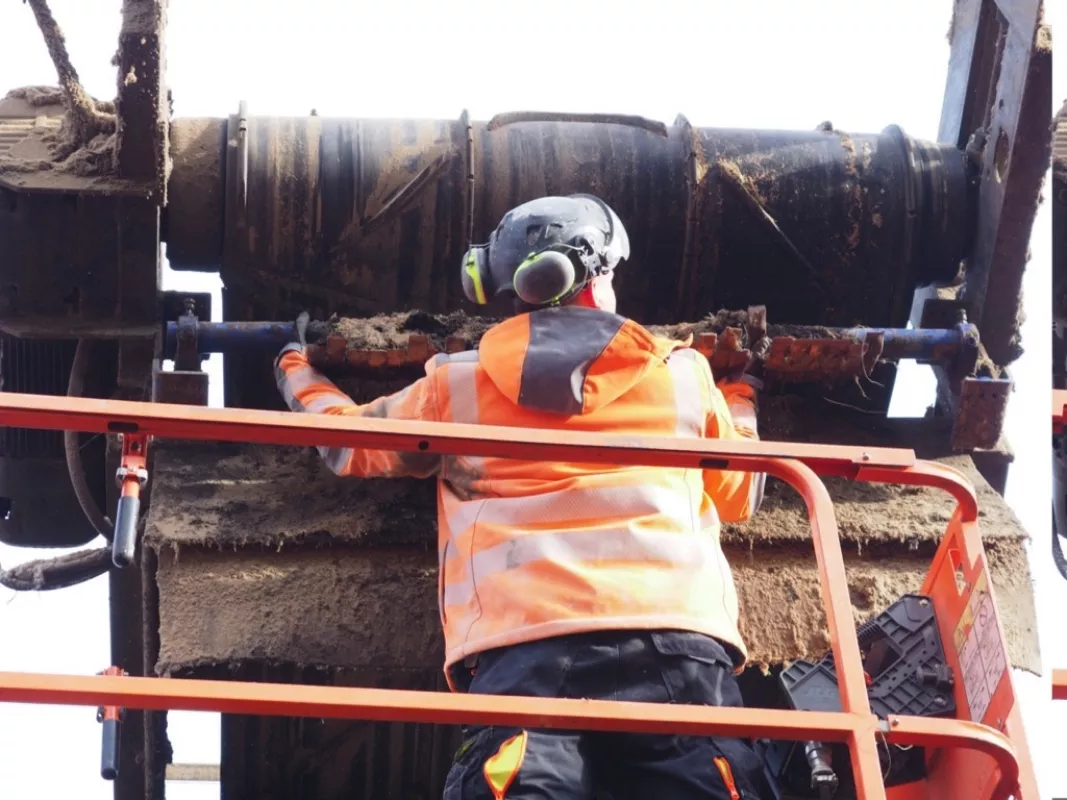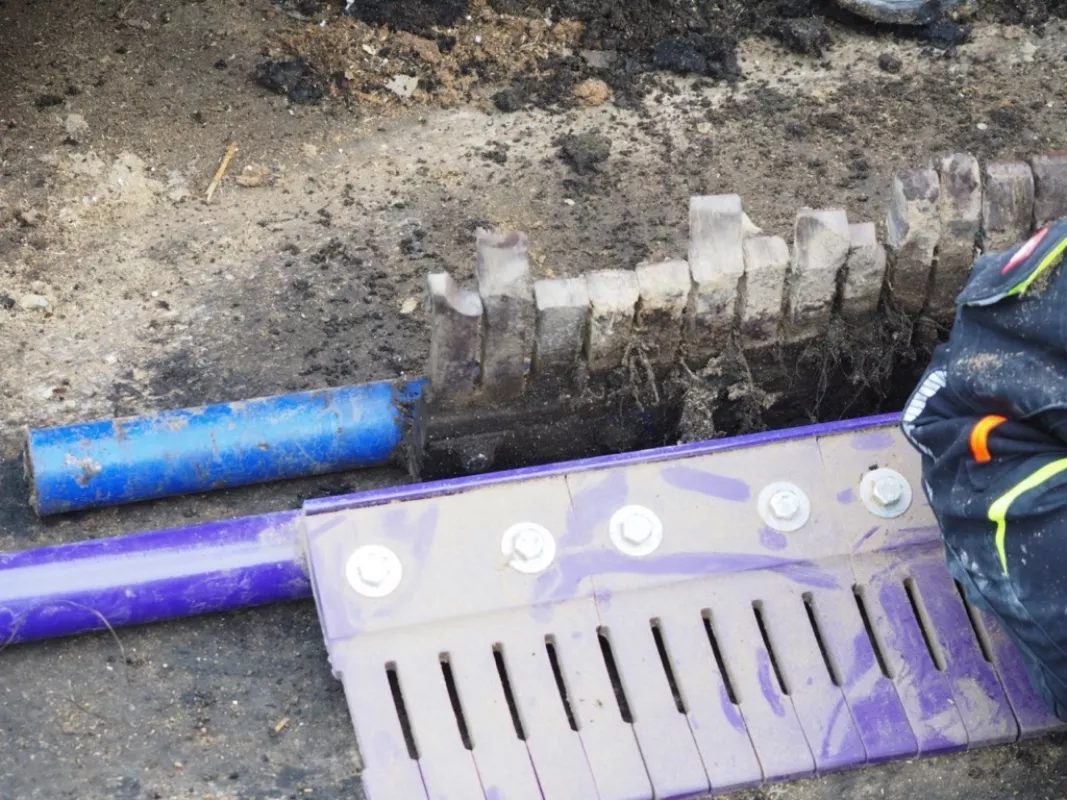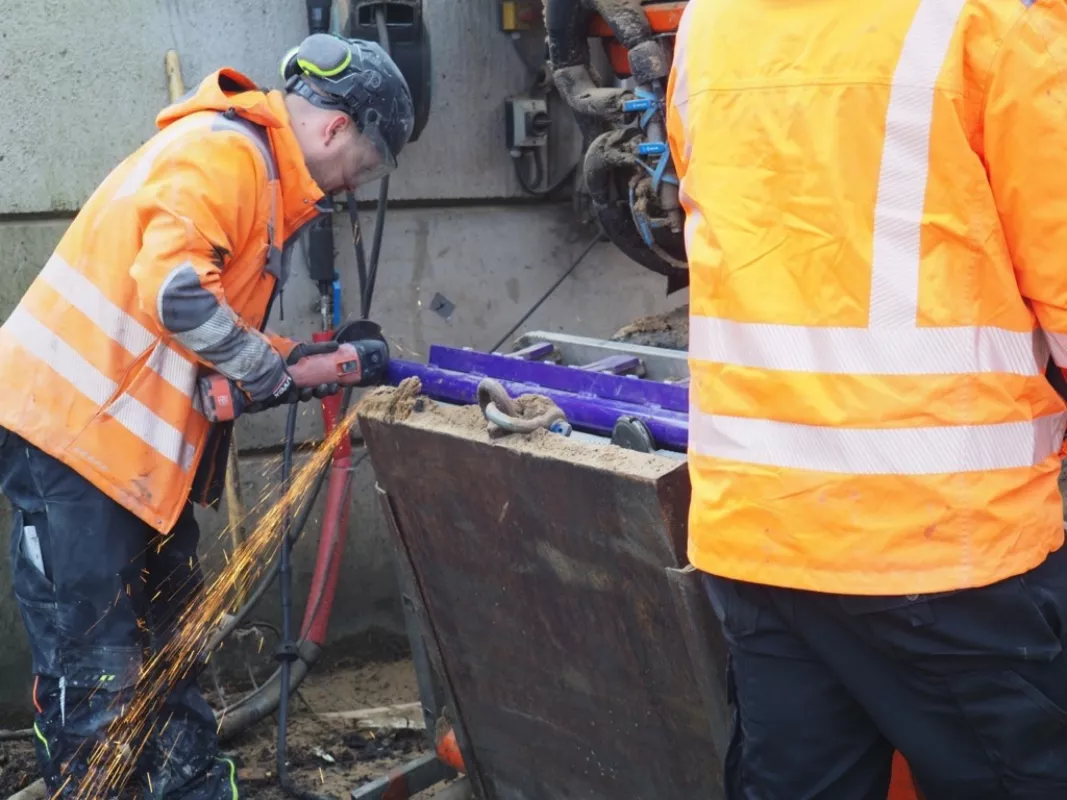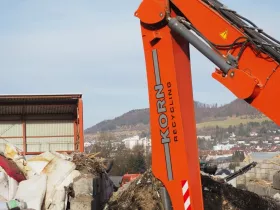
“As a rule, employees wash the belt cleaner once a week – but what’s important is the amount of work involved,” says field specialist Patrick Weigold of Flexco Europe GmbH. Today Weigold has come to Korn Recycling in Albstadt, a town in Germany’s Swabian Alb region, about 30 kilometers from his company’s headquarters in Rosenfeld. “The prototype of our new CFC cleaner, the Chevron Belt Finger Cleaner, has been in operation here for about a year. Its flexible cleaner blades with finger contours are what make it special.” The blades closely follow the shape of the chevron belt, resulting in a highly efficient solution. Flexco Europe has now made this product ready for the market, so the time has come for a final evaluation. In the next hour, Patrick Weigold will dismantle the prototype and install the new CFC secondary belt cleaner.
Full Range of Waste Disposal
In Albstadt Korn runs one of the world’s most modern plants for sorting industrial waste and processing refuse-derived fuel. It also has a number of mobile systems and systems for recovery of secondary raw materials. “Our core business is the disposal of industrial and commercial waste, and we also handle waste from private households and municipalities,” says Massimo Zitelli, head of material input, output and mobile processing at Korn Recycling. Korn’s mission is to recycle waste and put it to use.
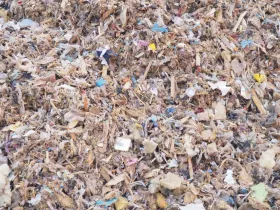
The certified waste management company has produced high-quality refuse-derived fuels for use in power plants since 2002 and operates an ultramodern pretreatment facility for recovery of secondary raw materials in accordance with Germany’s Commercial Wastes Ordinance. The company has worked with Flexco Europe for many years. The Flexible Steel Lacing Company (Flexco), based in Downers Grove, Illinois, is a leading international manufacturer of mechanical belt fastening systems, belt cleaners, belt trainers, impact beds, pulley lagging, segmented transfer plates and accessories for light and heavy conveyor belts. Flexco Europe GmbH, its German subsidiary, offers reliable, low-maintenance cleaners for normal and heavy-duty applications.
Time-consuming Removal of Material
Today the conveyor belt system has been stopped. “Before we installed the prototype, we were using a cleaner with brushes,” says Zitelli. Cleaners of this kind are common in the industry, and Korn’s was reliable. However, wet and moist material was getting caught between the bristles and became sticky. When the belt stopped overnight, the material hardened into a crust. In this way, more and more accumulated. “After a while, we only had a pulley without a cleaning effect,” says Zitelli.
Workers therefore had to spend four to five hours a week removing material from the cleaner. They used compressed air, sometimes water, and often even more radical solutions, such as a metal scraper, followed again by brushing and rinsing. All of this was time-consuming. What’s more, when the cleaner became less effective, large quantities of material spilled to the ground and couldn’t be recycled. “We lost up to ten tons per year,” Zitelli estimates. “That cost us a lot of money.”
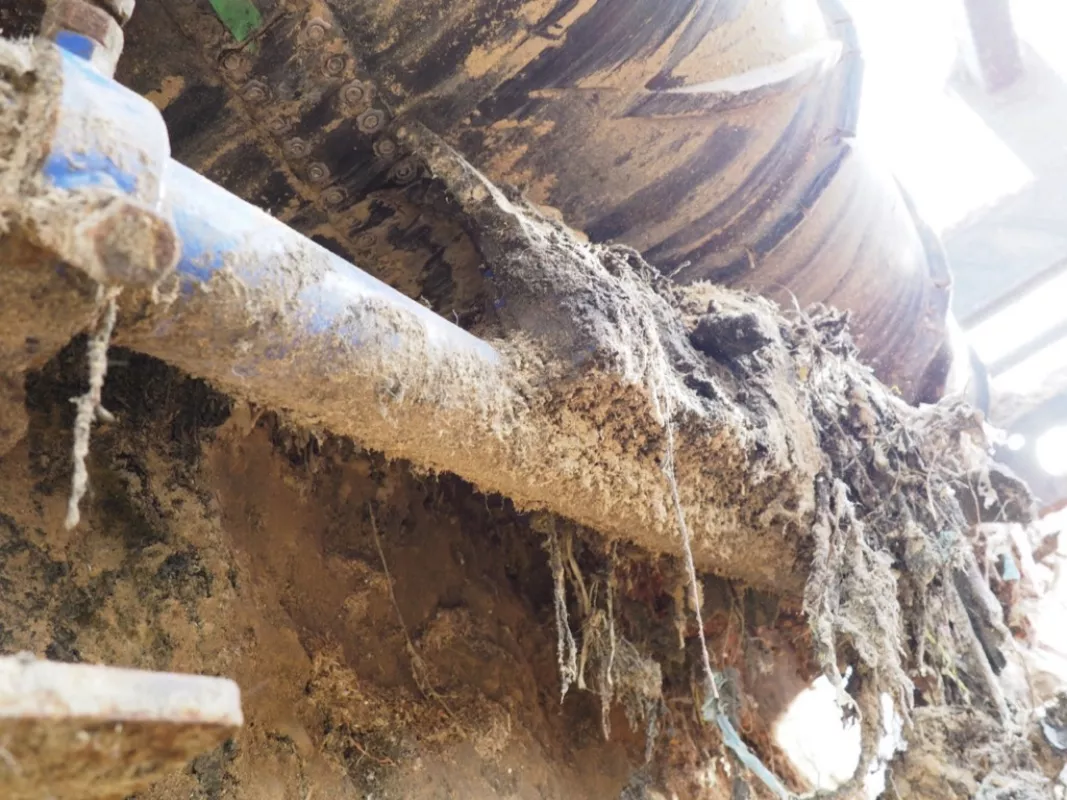
The prototype is still installed.
|
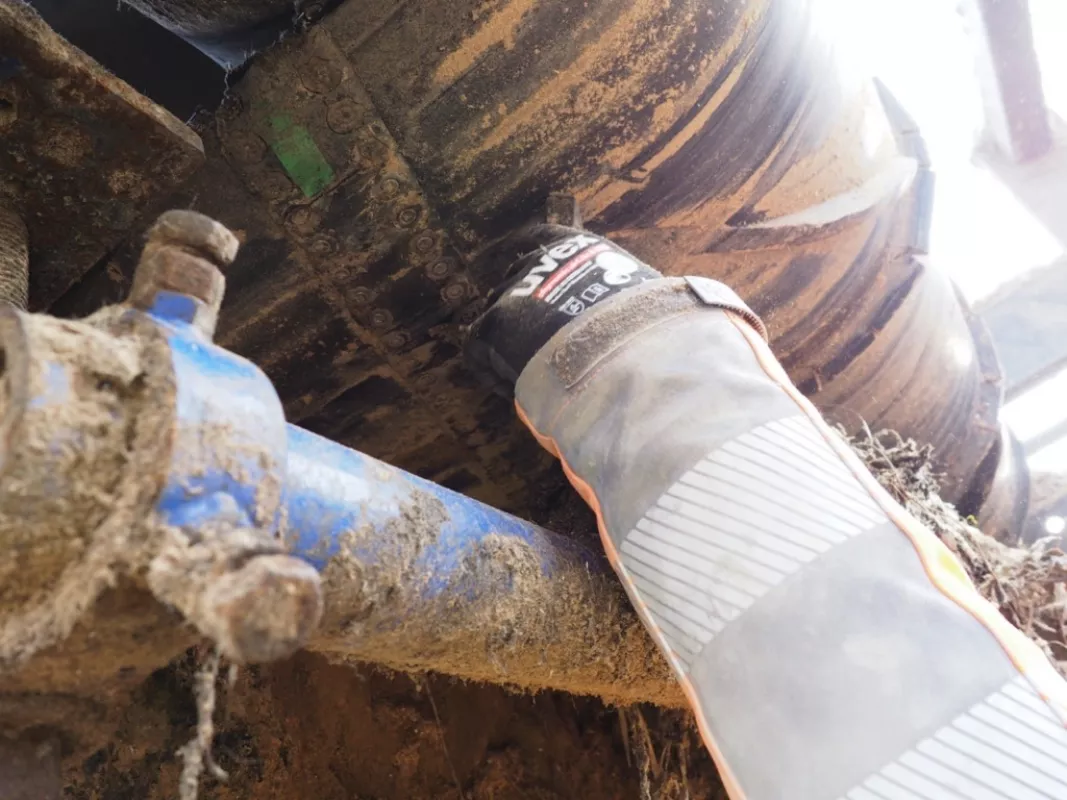
Patrick Weigold removes debris from the prototype in order to install the new cleaner.
|
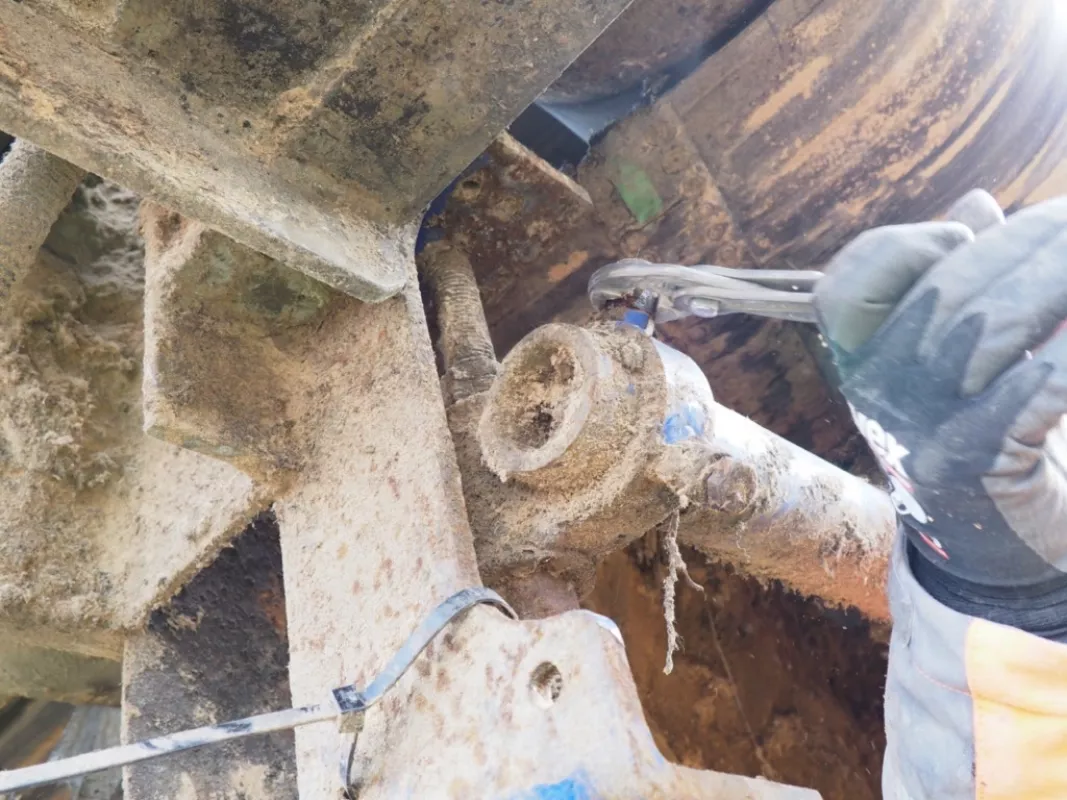
The bolt is stiff but can finally be opened.
|
The CFC cleaner is now ready to be installed below the load zone of the conveyor, in direct contact with the running belt. Weigold, standing on the work platform, opens the bolts of the prototype. Some are a little stiff, but he manages. “Installation is relatively simple, because the cleaner has only a few parts,” says the Flexco expert. “But of course it’s a little more difficult out here than in the training room, where everything’s very clean.”
Weigold removes the cleaner from its support and brings it down on the work platform. “When we installed the prototype, we didn’t yet have a name for it,” he says. “All we knew was that we were going to develop a cleaner with finger segments.”
Proven in Tough Everyday Use
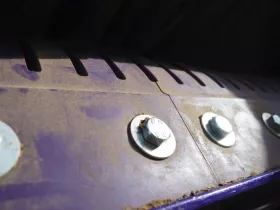
The device has worked well over the past year. Its segmented blades with flexible finger contours are especially effective for cleaning chevron belts with ribs, even with cleat heights of up to 32 millimeters and belt speeds up to 2.5 meters per second. Another key factor is the high-quality polyurethane used for the fingers. The wear is low, which means a longer service life.
Zitelli: “In the summer we hardly ever had to wash the new Flexco cleaner. The air was dry, and we had very little rain. When the cleaning effect declined a little, an employee worked on it with a rag for a few minutes. But that’s hardly worth mentioning.” Weather was of course always an important factor. Wind, cold air and water made the bulk material stick together. Korn Recycling was still able to spend about 80 percent less time maintaining the blades. “We went from four or five hours per week down to half an hour,” says Zitelli.
As a result, much less material fell to the ground. The new cleaner worked reliably, removing material so that it could be returned to the machine and thus back into production.
Little Maintenance Effort
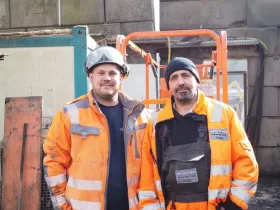
Flexco Europe designs its blade cleaners for minimal maintenance during operation. Even so, a few tasks are necessary. “After we install a cleaner we draw up a plan for routine maintenance,” says Flexco expert Weigold. “This ensures that the cleaner performs at its best. Also, problems can be detected and remedied at an early stage before a malfunction occurs.” When a belt is running, visual inspections are sufficient. These are necessary every two to four weeks. Maintenance itself is carried out when the conveyor system has stopped. This routine technical inspection is required every six to eight weeks.
Back in Operation after an Hour
Weigold descends on the work platform and sets the prototype next to the new CFC for comparison. The fingers are slightly worn. However, they can be easily and quickly replaced during operation. He saws off both ends of the robust 60 mm diameter pole, bringing it to the right length. Then he rides the work platform with a coworker up to the conveyor belt and inserts the new cleaner. He tightens the bolts and is done.
■



